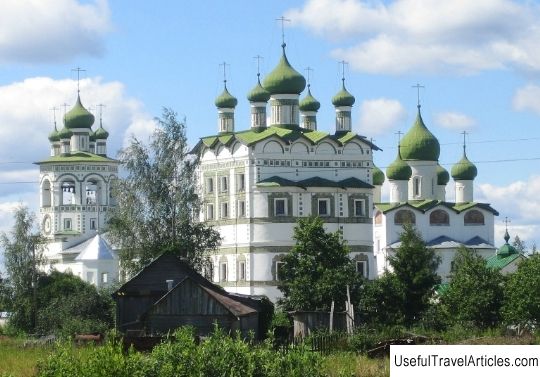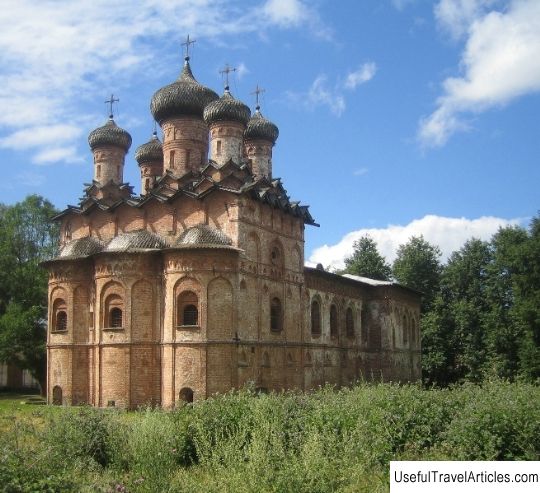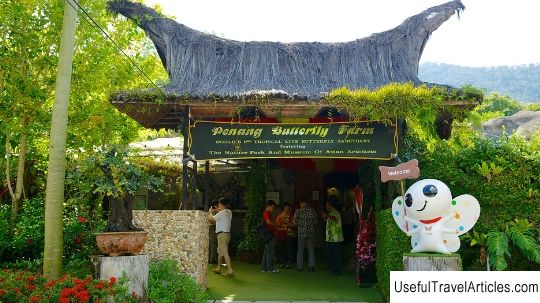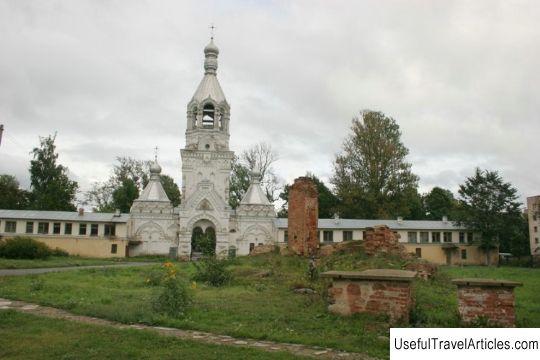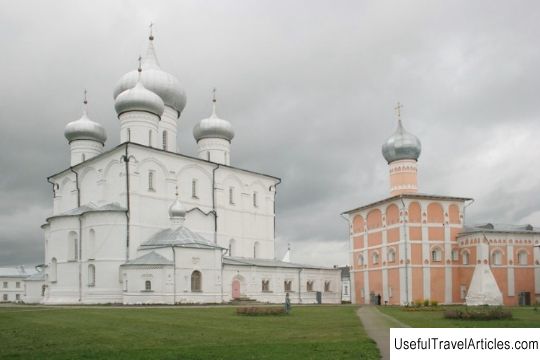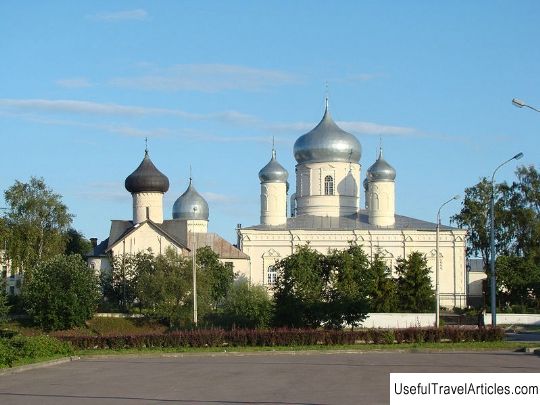Nikolo-Vyazhischsky monastery description and photos - Russia - North-West: Veliky Novgorod
Rating: 8,0/10 (890 votes) Nikolo-Vyazhischsky monastery description and photos - Russia - North-West: Veliky Novgorod. Detailed information about the attraction. Description, photos and a map showing the nearest significant objects. Photo and descriptionThe Nikolo-Vyazhishsky monastery is located in the village of Vyazhischi, approximately 12 kilometers from Novgorod. On the north and west sides, the monastery is surrounded by endless swamps. On the southern and eastern sides, at a sufficient distance, there are buildings of the Novgorod industrial zone, the village of Syrkovo, summer cottages. The monastery was created by three pious monks: Galaktion, Euphrosynus and Ignatius, in the second half of the 14th century and was originally conceived as male. In 1391, it was already written in the land survey that this monastery exists, moreover, it owns certain lands. In the first quarter of the 15th century, wood churches dedicated to Anthony the Great and St. Nicholas were built in the monastery. In the second quarter of the 15th century, St. Euthymius II, Archbishop of Novgorod, lived in the monastery. In view of the fact that the saint spent his best years in this monastery, the title `` Vyazhischsky '' was added to his name. Apparently, Archbishop Euthymius was an active person. In 1436, instead of the Nikolskaya wooden church, he erected a stone church. But the church collapsed the very next year. In 1438, Euthymius revives the destroyed temple. A little later, in 1441, the temple was painted with frescoes. Around the same time, the monastery infrastructure was being formed: a cookery, warehouses and cellars, a bakery, a prosphora. All this was formed in conjunction with the Church of the Apostle and Evangelist John the Theologian. The monastery flourished in the 15-16th century. He owns 2,000 hectares of land, a courtyard in Novgorod, has some privileges that exempt him from duties. During the Polish invasion, the monastery suffered greatly, but was later revived. Moreover, it even acquires branches. In 1679, the Nikolayevsky Ponedelsky monastery was attached to the monastery, and in 1684 - the Spassky Syabersky monastery. In the future, the monastery undergoes troubles of various sizes. A strong fire in 1688, which broke out in the monastery, destroyed all the wooden buildings, and the stone ones were extremely damaged. However, the monastery was repaired, cleaned and decorated with tiles, which are an adornment to this day. The true origin of the tiles has not been clarified. Their production is attributed to the inhabitants of the village of Valdai (nowadays the city), and possibly the masters of Moscow or Yaroslavl. After the completion of the repair work, they had to start anew: a strong hurricane tore off the roof of the Theological Church and all five chapters with crosses. In 1702, the Theological Church was restored, and put into operation. In the Vyazhishchi Monastery, tiles are used as inserts on galleries, used in wall niches, included in the decor of porches, in the edging of windows and doors, openings, they decorate the parapets of staircases, are present in the frame of drums chapters, in the friezes of the refectory. In 1704, by decree of Catherine II, the monastery was admitted to the second class with the confiscation of land. Having lost land, the monastery ceases to flourish. In the 18-19th century it was used as a monastery prison. Monks and priests were imprisoned for "actions obscene to the clergy," and the like. In 1920, the monastery was closed, its buildings were transferred to a neighboring collective farm. The collective farmers made some changes to the structure of the walls, new entrances were broken through. A school was organized in the monastery. After the end of the Second World War, work was carried out to restore the monastery. To this day, of all the buildings of the monastery, the St. Nicholas Cathedral has survived, a somewhat severe look in the Novgorod style, built in 1681-1683. Also preserved: a fraternal building with monastic cells with massive walls and a row of windows rounded from above and an elegant, very decoratively decorated refectory (1694-1698) with the churches of the Ascension of Christ and the Apostle John the Theologian. In 1989, the monastery transferred to the Russian Orthodox Church. The first liturgy was served by the Metropolitan of Leningrad and Novgorod, later Patriarch Alexy II. He also changes the focus of the monastery, ordering it to be female.           We also recommend reading Suur-Savon museo description and photos - Finland: Mikkeli Topic: Nikolo-Vyazhischsky monastery description and photos - Russia - North-West: Veliky Novgorod. |
